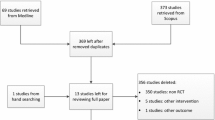Abstract
Background
Total knee arthroplasty (TKA) is a very successful operation for the treatment of end-stage arthritis of the knee joint. In spite of improvement in surgical technique, implant design, postoperative pain management, and rehabilitation, some patients are not satisfied with the outcome of the surgery. It is believed that high-flexion (H-F) activities such as cross-legged sitting and squatting are necessary for satisfaction after TKA in Indian patients due to cultural and social reasons. This has led to the development and marketing of implant designs allowing H-F after TKA without strong evidence in the literature.
Materials and Methods
We carried out a retrospective study to determine the level of satisfaction in 74 patients operated for 120 TKA over a 5 year period. This was determined on the basis of a satisfaction questionnaire which included questions to assess satisfaction regarding pain relief and ability to perform routine daily activities and high knee flexion activities such as squatting and cross-legged sitting.
Results
Out of a total of 74 patients, 69 patients were overall satisfied with their TKA. Out of these, only 5 patients could squat or sit in a cross-legged position. Majority of the patients were satisfied with the pain relief and improvement in their capacity to work provided by TKA.
Conclusions
Ability to perform H-F activities after TKA is not a necessary prerequisite for satisfaction in Indian patients. Implant designs allowing H-F should be used in a selected group of patients with good preoperative knee flexion and specific requirements.
Similar content being viewed by others
References
Heck DA, Robinson RL, Partridge CM, Lubitz RM, Freund DA. Patient outcomes after knee replacement. Clin Orthop Relat Res 1998;356:93–110.
Bourne RB, Chesworth BM, Davis AM, Mahomed NN, Charron KD. Patient satisfaction after total knee arthroplasty: Who is satisfied and who is not? Clin Orthop Relat Res 2010;468:57–63.
Noble PC, Conditt MA, Cook KF, Mathis KB. The John Insall Award: Patient expectations affect satisfaction with total knee arthroplasty. Clin Orthop Relat Res 2006;452:35–43.
Baker PN, van der Meulen JH, Lewsey J, Gregg PJ; National Joint Registry for England and Wales. The role of pain and function in determining patient satisfaction after total knee replacement. Data from the National Joint Registry for England and Wales. J Bone Joint Surg Br 2007;89:893–900.
Kawamura H, Bourne RB. Factors affecting range of flexion after total knee arthroplasty. J Orthop Sci 2001;6:248–52.
Kim YH, Sohn KS, Kim JS. Range of motion of standard and high-flexion posterior stabilized total knee prostheses. A prospective, randomized study. J Bone Joint Surg Am 2005;87:1470–5.
Argenson JN, Komistek RD, Mahfouz M, Walker SA, Aubaniac JM, Dennis DA, et al. A high flexion total knee arthroplasty design replicates healthy knee motion. Clin Orthop Relat Res 2004;428:174–9.
Li C, Shen B, Yang J, Zhou Z, Kang P, Pei F, et al. Do patients really gain outcome benefits when using the high-flex knee prostheses in total knee arthroplasty? A meta-analysis of randomized controlled trials. J Arthroplasty 2015;30:580–6.
Guild GN 3rd, Labib SA. Clinical outcomes in high flexion total knee arthroplasty were not superior to standard posterior stabilized total knee arthroplasty. A multicenter, prospective, randomized study. J Arthroplasty 2014;29:530–4.
Kim YH, Choi Y, Kwon OR, Kim JS. Functional outcome and range of motion of high-flexion posterior cruciate-retaining and high-flexion posterior cruciate-substituting total knee prostheses. A prospective, randomized study. J Bone Joint Surg Am 2009;91:753–60.
Choi WC, Lee S, Seong SC, Jung JH, Lee MC. Comparison between standard and high-flexion posterior-stabilized rotating-platform mobile-bearing total knee arthroplasties: A randomized controlled study. J Bone Joint Surg Am 2010;92:2634–42.
Seon JK, Park SJ, Lee KB, Yoon TR, Kozanek M, Song EK, et al. Range of motion in total knee arthroplasty: A prospective comparison of high-flexion and standard cruciate-retaining designs. J Bone Joint Surg Am 2009;91:672–9.
Seon JK, Yim JH, Seo HY, Song EK. No better flexion or function of high-flexion designs in Asian patients with TKA. Clin Orthop Relat Res 2013;471:1498–503.
Ng FY, Wong HL, Yau WP, Chiu KY, Tang WM. Comparison of range of motion after standard and high-flexion posterior stabilised total knee replacement. Int Orthop 2008;32:795–8.
Ranawat CS. Design may be counterproductive for optimizing flexion after TKR. Clin Orthop Relat Res 2003;416:174–6.
Nagura T, Dyrby CO, Alexander EJ, Andriacchi TP. Mechanical loads at the knee joint during deep flexion. J Orthop Res 2002;20:881–6.
Han HS, Kang SB, Yoon KS. High incidence of loosening of the femoral component in legacy posterior stabilised-flex total knee replacement. J Bone Joint Surg Br 2007;89:1457–61.
Sharma A, Komistek RD, Scuderi GR, Cates HE Jr. High-flexion TKA designs: What are their in vivo contact mechanics? Clin Orthop Relat Res 2007;464:117–26.
Moynihan AL, Varadarajan KM, Hanson GR, Park SE, Nha KW, Suggs JF, et al. In vivo knee kinematics during high flexion after a posterior-substituting total knee arthroplasty. Int Orthop 2010;34:497–503.
Jacobs CA, Christensen CP. Factors influencing patient satisfaction two to five years after primary total knee arthroplasty. J Arthroplasty 2014;29:1189–91.
Narayan K, Thomas G, Kumar R. Is extreme flexion of the knee after total knee replacement a prerequisite for patient satisfaction? Int Orthop 2009;33:671–4.
Jain S, Pathak AC, Kanniyan K, Kulkarni S, Tawar S, Mane P, et al. High-flexion posterior-stabilized total knee prosthesis: Is it worth the hype? Knee Surg Relat Res 2013;25:100–5.
Author information
Authors and Affiliations
Corresponding author
Rights and permissions
About this article
Cite this article
Mavalankar, A.P., Rani, S. Is Achieving High Flexion Necessary for Satisfaction after Total Knee Arthroplasty in Indian Patients?. JOIO 53, 270–275 (2019). https://doi.org/10.4103/ortho.IJOrtho_268_17
Published:
Issue Date:
DOI: https://doi.org/10.4103/ortho.IJOrtho_268_17




